|
part 9. |
A rather extensive collection of wonderful magic lantern slide sets |
|
|
||||||||||
| Go to: | part 1 | part 2 | part 3 | part 4 | part 5 | part 6 | part 7 | part 8 | part 9 | part 10 |
| part 11 | part 12 | part 13 | part 14 | part 15 | part 16 | part 17 | part 18 | part 19 | part 20 | |
|
|
||||||||||
|
Jack's treasure: the story of a London waif The set is made by Theobald & Co. Slides measure 3.25 inches (8.2 cm) square. |
||
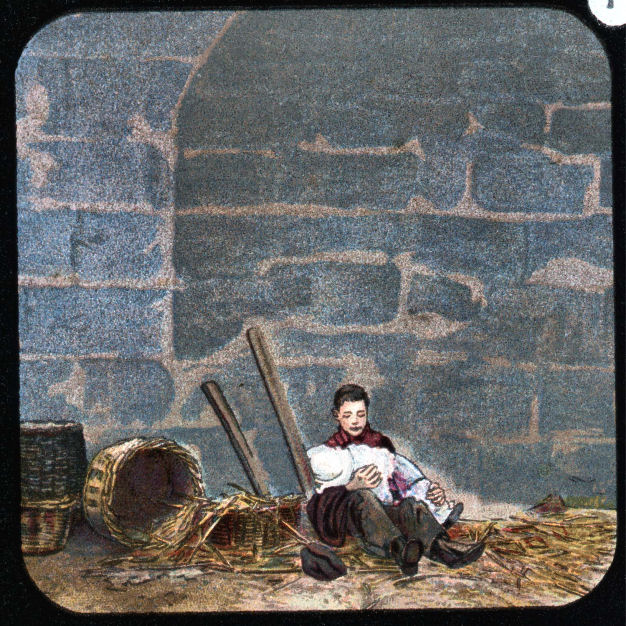 |
 |
|
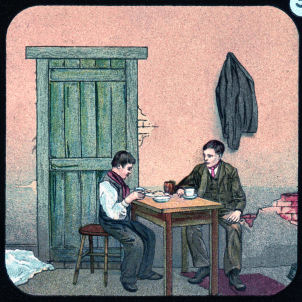 |
||
| 1. There looked up at him a sweet baby face. | 2. 'Why Jack, whatever are you doing baby-famring?' | 3. Another boy, slightly older than himself. |
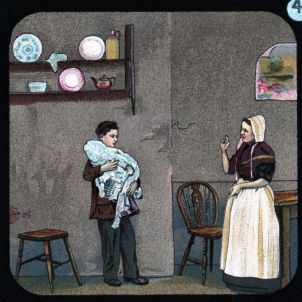 |
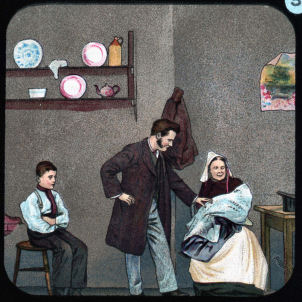 |
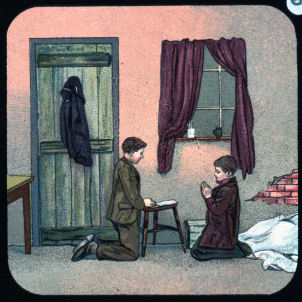 |
| 4. Mother O'Connell was a motherly old lady. | 5. The Club Doctor was visiting in the court. | 6. George persuaded Jack to kneel with him on the floor. |
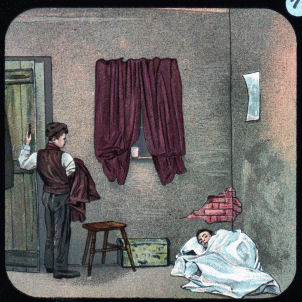 |
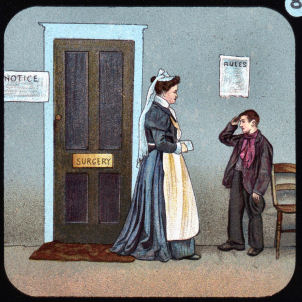 |
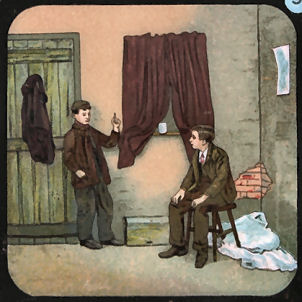 |
| 7. He rises and steals quietly across the floor. | 8. One of the nurses told him it was impossible to see the baby till tomorrow. | 9. Jack gleefully tells the other boys of the kind nurse he had seen. |
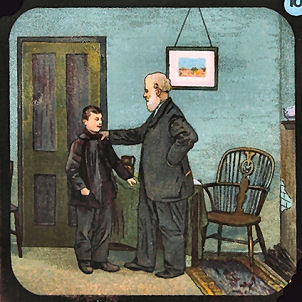 |
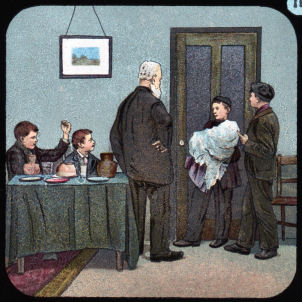 |
 |
| 10. The kindly House Surgeon called him on one side. | 11. The kindly House Surgeon placed the now perfectly recovered baby in Jack's arms. | 12. The gentleman decided to give him a chance in life. |
Where is my wandering boy tonight A small set of only four slides made by York and Son, England, after the song 'Where is my wandering boy tonight' by Robert Lowry. A mother weeps for her wandering boy, saying he was once "my joy and light". She begs the listener to find her boy and "tell him I love him still" |
||
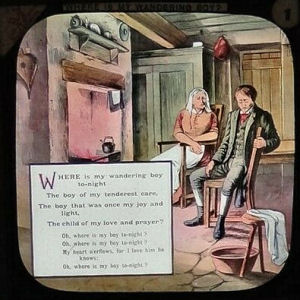 |
 |
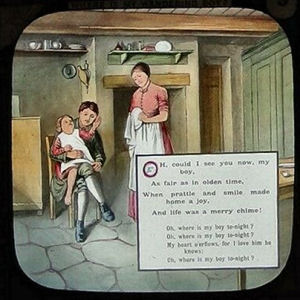 |
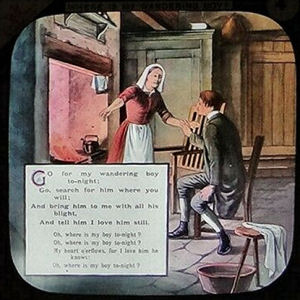 |
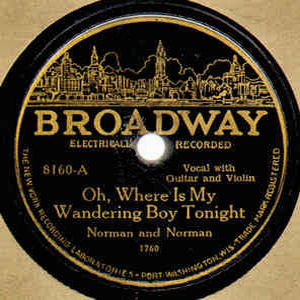 |
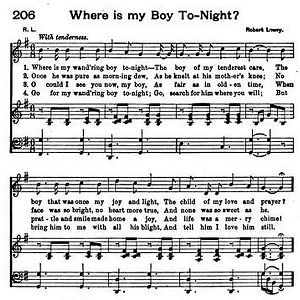 |
|
Prayer and potatoes. A trial of faith, after a poem John Tyler Pettee. A set of 9 square magic lantern slides made by Alfred Pumphrey. A poor widow is almost starving. De Dean comes to visit her and she tells him that she urgently needs potatoes, but de Dean prefers a devout prayer. That night he changes his mind. He goes to the widow again the next day and brings a large bag of potatoes for her. |
||
 |
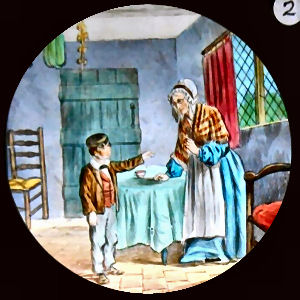 |
|
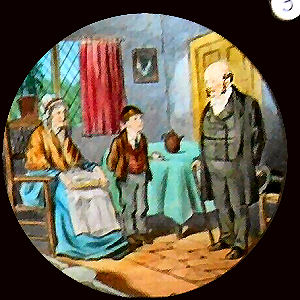 |
||
| 1. An old lady sat in her old arm chair. | 2. And she thought of the Deacon over the way. | 3. But the Deacon's religion didn't lie that way. |
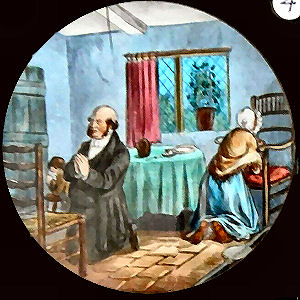 |
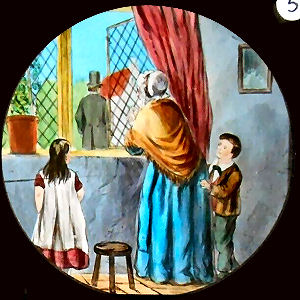 |
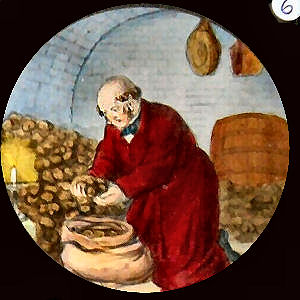 |
| 4. But when he prayed 'Lord, give her peace'. | 5. 'Twas very embarrassing to have her act so. | 6. And the groan followed him all the way home. |
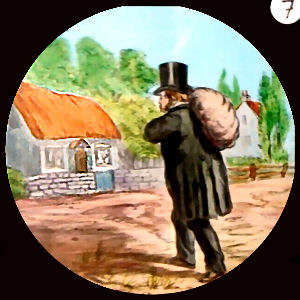 |
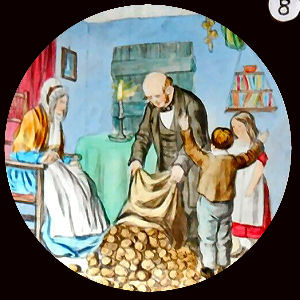 |
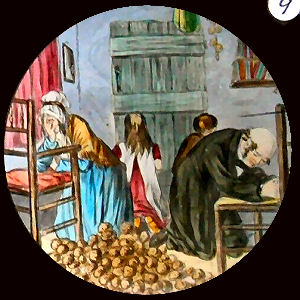 |
| 7. Again he went to the widow's lone hut. | 8. And, entering in, he poured on the floor. | 9. Then, would you who hear this simple tale. |
|
The last verse: Then, would you who hear this simple tale, Pray for the poor, and praying, prevail ? Then preface your prayers with alms and good deeds, Search out the poor, their wants and needs ; Pray for their peace and grace, spiritual food, For wisdom and guidance - all these are good, But don't forget the potatoes! |
|
The Village Blacksmith A small set of four black and white square magic lantern slides with pictures after the song of the same name by Henry Wadsworth Longfellow (text) and W.H. Weiss (music) made by York & Son, England. You will find a large series of 26 coloured slides here. |
||
 |
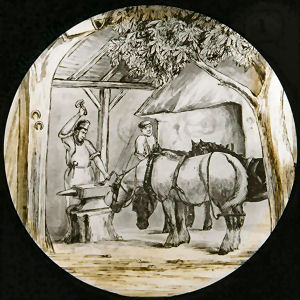 |
|
| 1. Under the spreading Chestnut Tree | ||
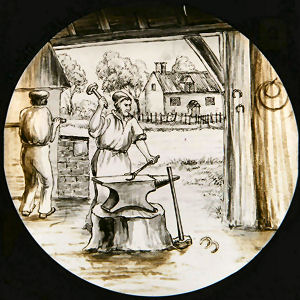 |
 |
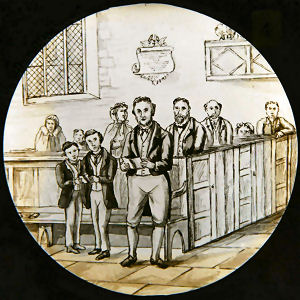 |
|
2. Week in, week out, from morn till night |
3. And children coming home from school |
4. He goes on Sunday to the Church |
|
Another set of magic lantern slides
telling the story of The Village Blacksmith This one was made by Theobald & Co, England. It consists of 12 numbered slides of approx. 8.1 x 8.1 cm. You will find a large series of 26 coloured slides here. |
||
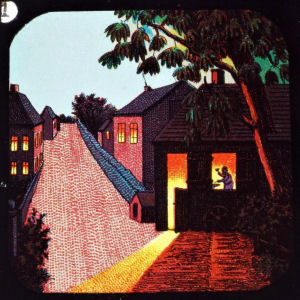 |
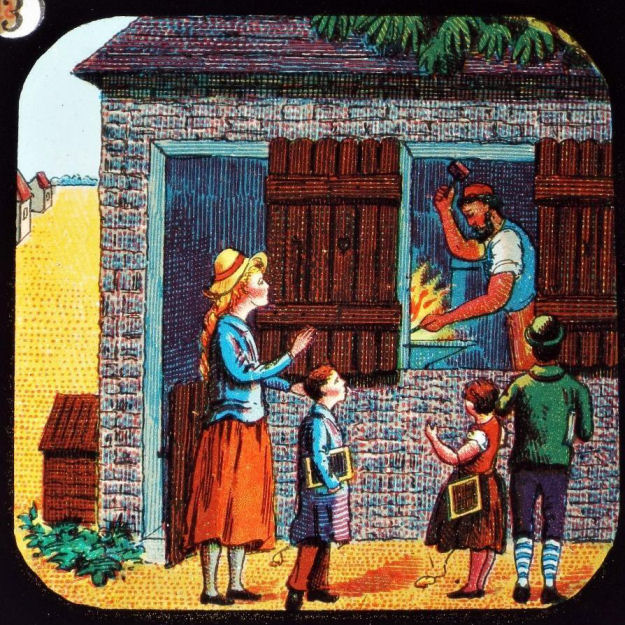 |
|
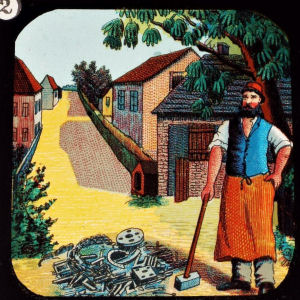 |
||
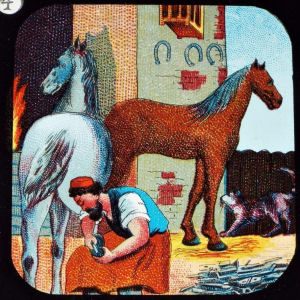 |
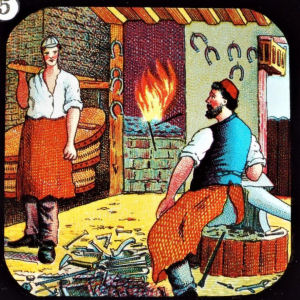 |
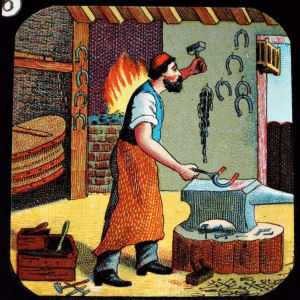 |
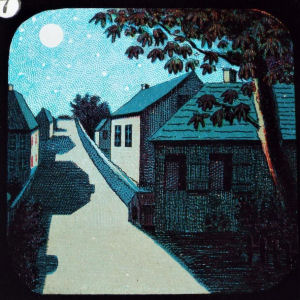 |
 |
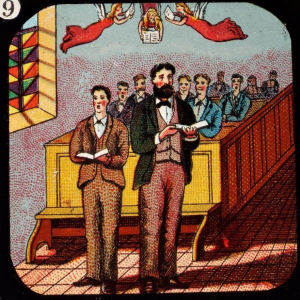 |
 |
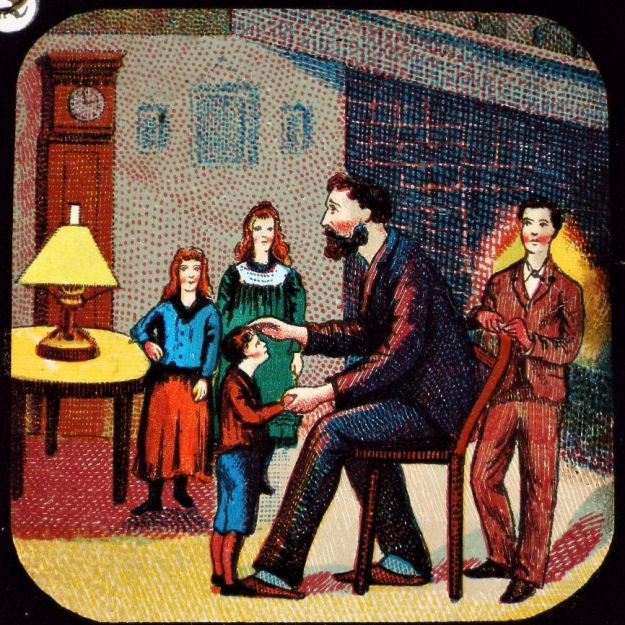 |
|
 |
||
|
Undine
A set of 11 (rather unusual)) magic lantern slides made by an unknown manufacturer. Unfortunately the first slide is missing. |
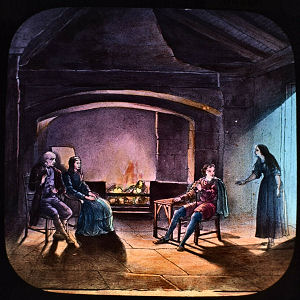 |
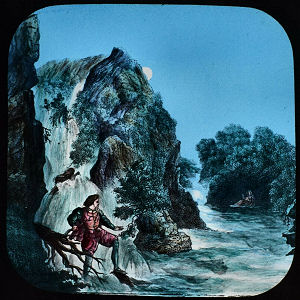 |
| 1. The Approach of the Beautiful Knight | 2. Unexpected Appearance of Undine | 3. The Knight's Search Rewarded |
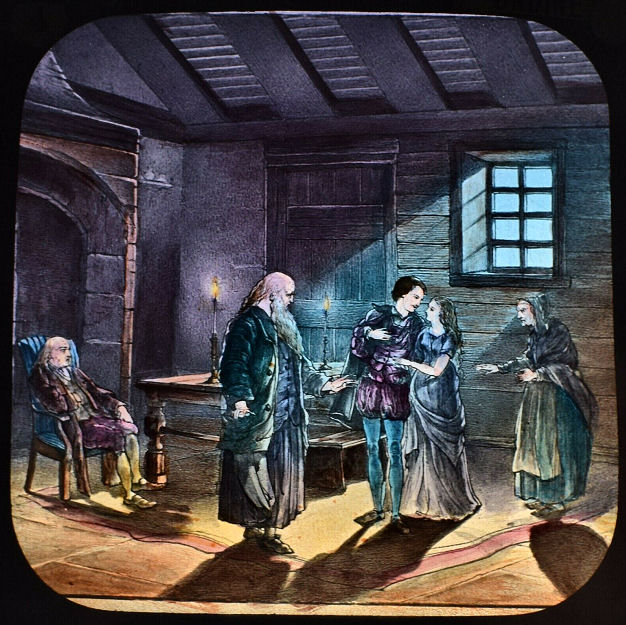 |
 |
|
 |
||
| 4. Undine's Wedding | 5. Castle Ringstetten | 6. The Knight's Adventure in the Black Valley |
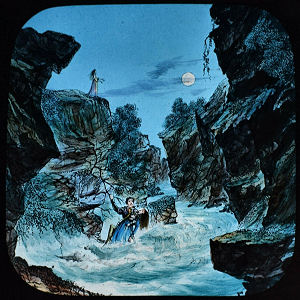 |
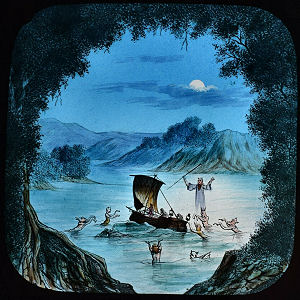 |
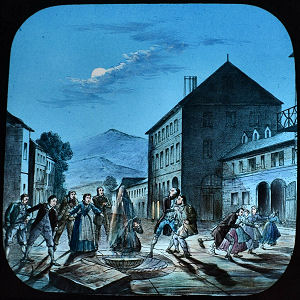 |
| 7. Undine delivers the Knight and Bertalda | 8. Undine disappears beneath the Danube | 9. Removal of the Stone from the Fountain |
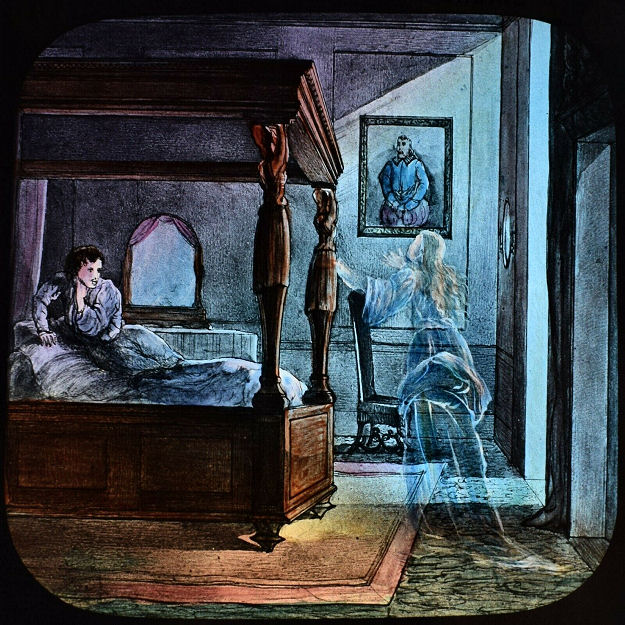 |
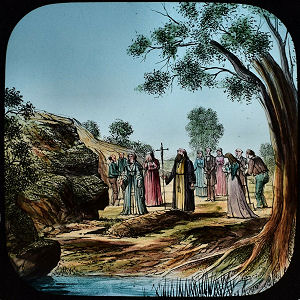 |
|
| An ondine or undine is a mythological water nymph. They also appear in European folklore as elfin creatures. What is special is that the ondine has no soul. By marrying a human, ondines could gain a soul and give birth to a child. | ||
| 10. The Death of the Knight | 11. Burial of the Knight | |
|
Ondines are found in forest pools and waterfalls. They have a beautiful voice or
call that is sometimes heard above the sound of the water. The motif of
mortality when ondines give birth to a child is a motif that inspired many
romantics and tragedies in art, music and literature. In 18th century Scotland, ondines were also referred to as the 'wrath of the water'. |
||
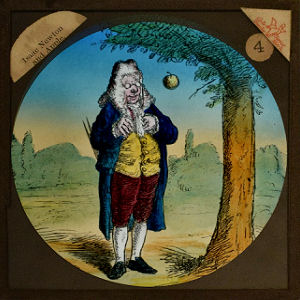 |
Sir Isaac Newton and the apple
A beautiful set of 8 magic lantern slides made by York & Son, England, ca 1885. The English physicist, mathematician, astronomer, natural philosopher, alchemist, mint master and theologian Isaac Newton is regarded by many scientists as the greatest scholar of all time. He was the first scientist to think that there is a force that pulls objects towards the earth. He called that force gravity. There is a story that he discovered this after seeing an apple fall from a tree to the ground, or even got it on his head while he was taking a nap under the tree. |
|
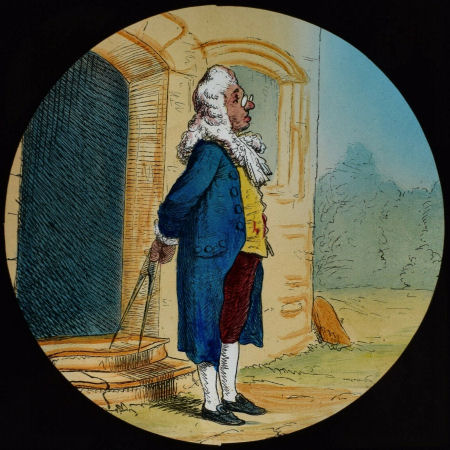 |
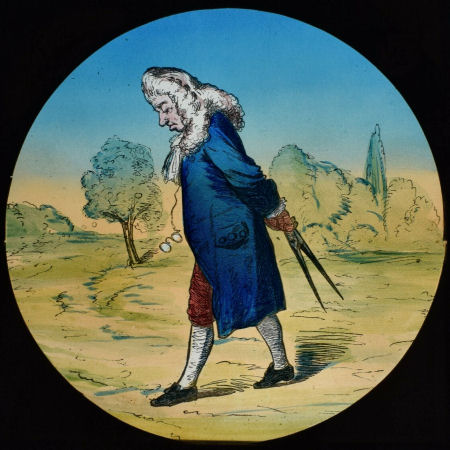 |
| 1. From his study, Sir Isaac Newton seeks the fresh air. | 2. He paces up and down, his brain full of scientific ideas. |
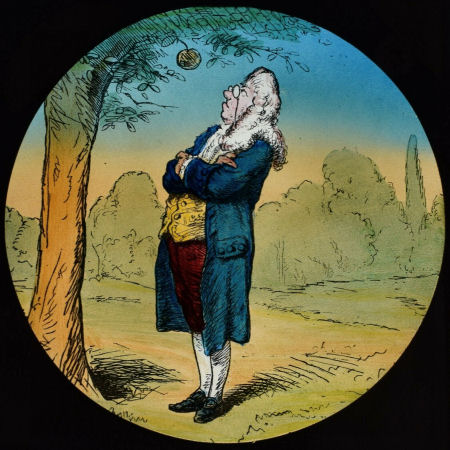 |
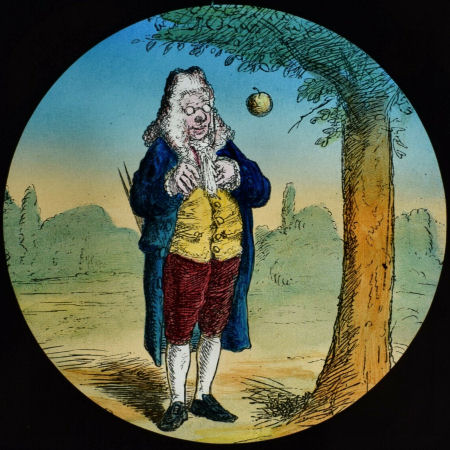 |
| 3. His attention is drawn to an apple hanging on the tree. | 4. The apple falls. Here is an example of the law of gravity. |
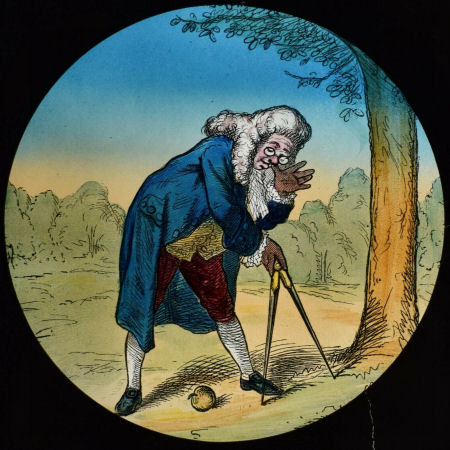 |
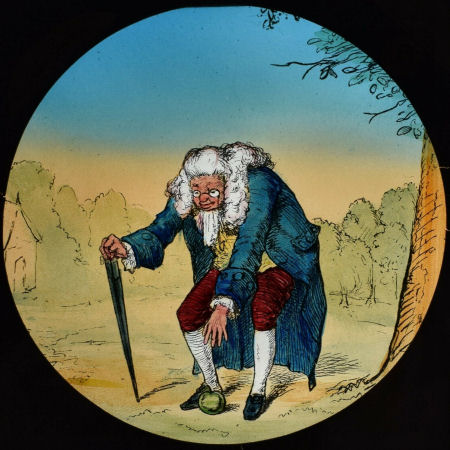 |
| 5. He measures, with his compasses, the exact distance. | 6. He picks up the apple, as an object for future investigation. |
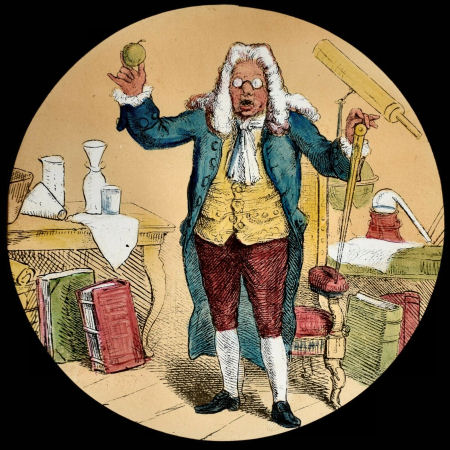 |
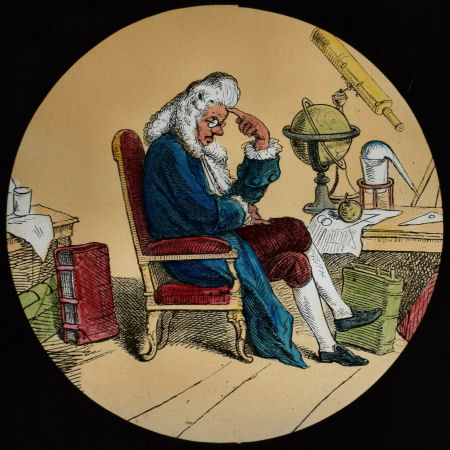 |
| 7. The principle involved is not quite clear to him. | 8. He discovers the wonderful law of gravity. |
|
|
More beautiful sets... |
| |
©1997-2025 'de Luikerwaal' All rights reserved. Last update: 14-02-2025. |
|